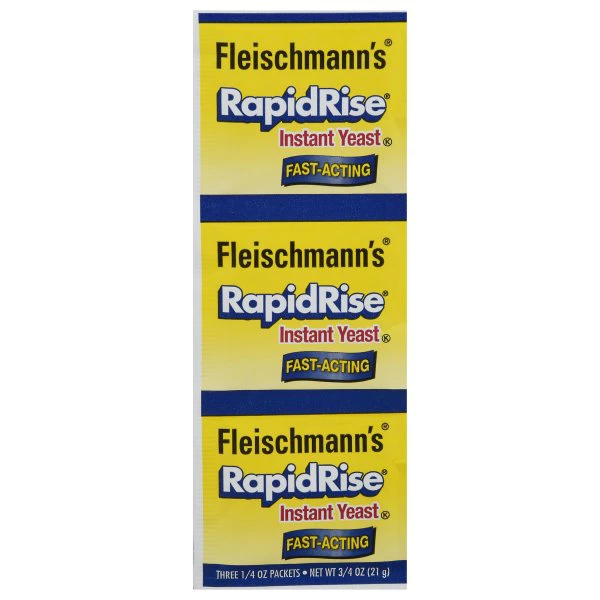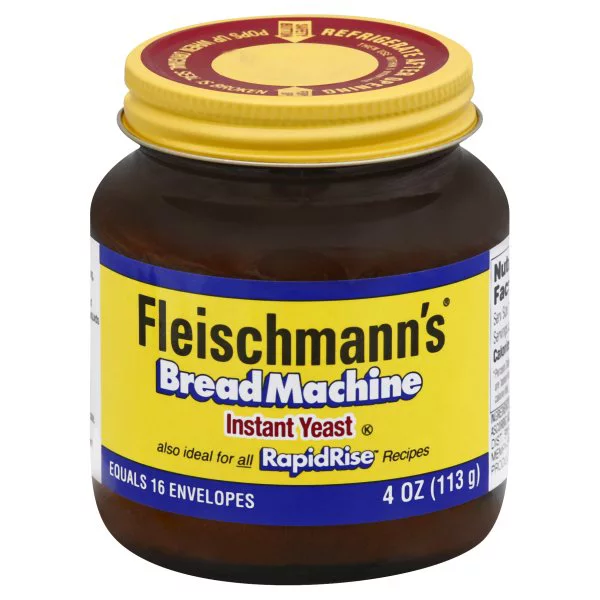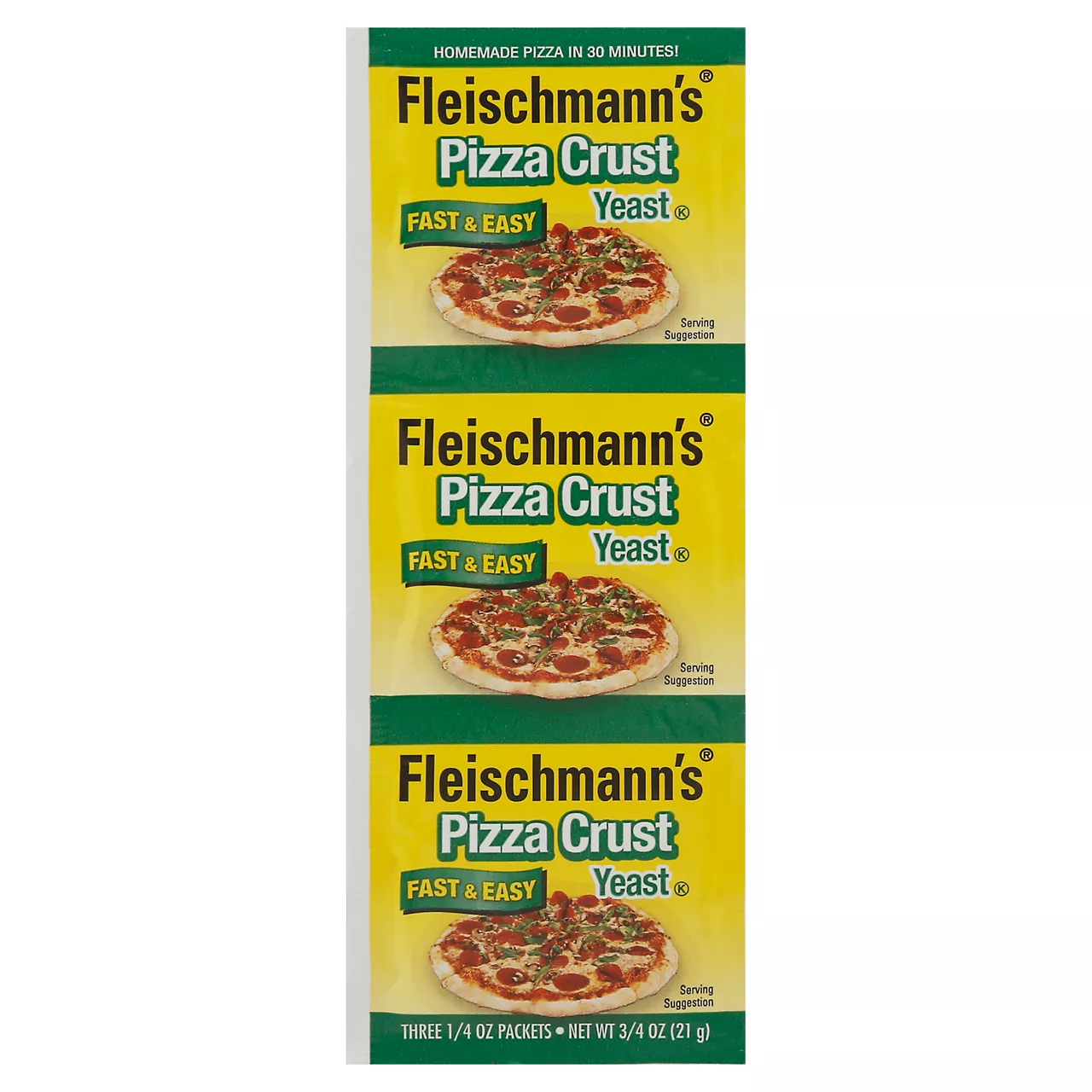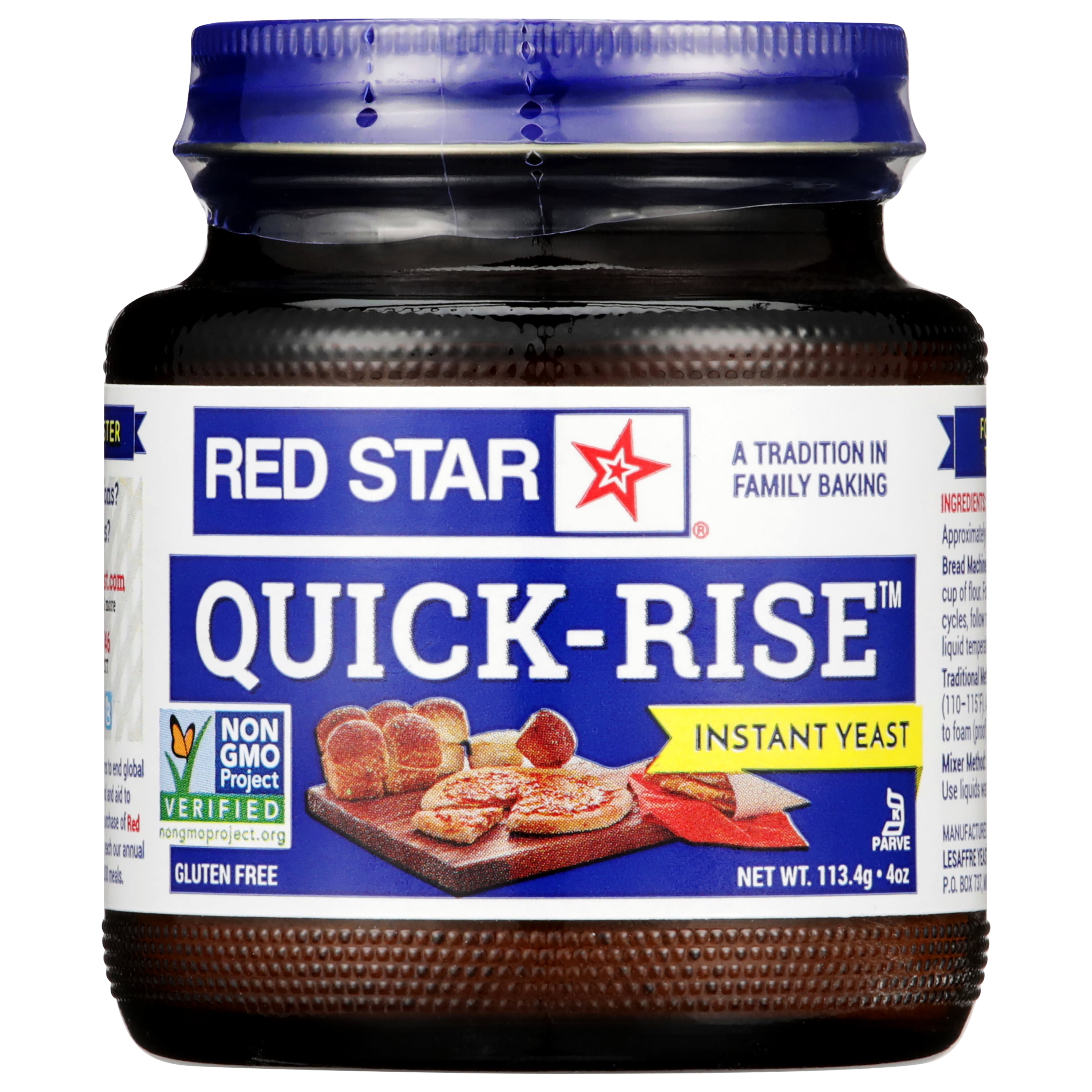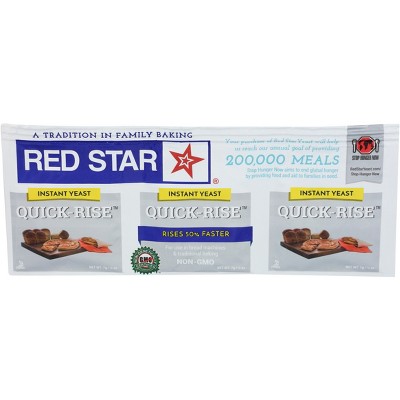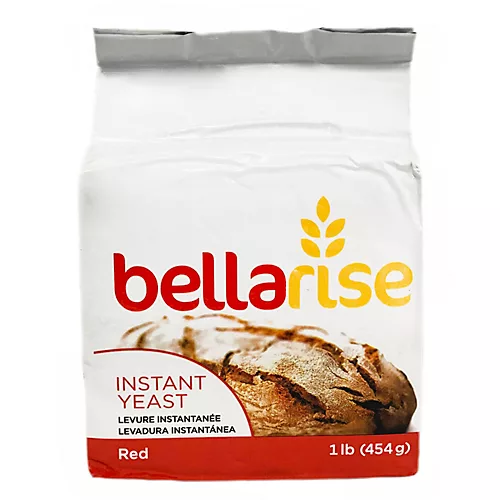BREADS
Rapid Rise Yeast
Rapid rise yeast, also known as instant yeast or bread machine yeast, is a type of yeast specially formulated to activate and ferment quickly during the baking process. As a leavening agent, it helps bakers to shorten the time required for dough to rise, making it a popular choice for creating homemade bread, rolls, and other yeast-based baked goods in a timely manner.
Rapid rise yeast is highly active and differs from traditional active dry yeast in that it does not need to be dissolved in water prior to use. Home cooks and consumers often appreciate its ease of use and its ability to streamline baking projects, as it generally requires only one rise, simplifying the baking process and reducing proofing time.
46%
CARBS
9%
FAT
45%
PROTEIN
164 Rapid Rise Yeast Products
Fleischmann's Rapid Rise Instant Yeast Fast Acting 0.25 Ounce, 3 Count …
Fleischmann's Bread Machine Yeast
Fleischmann's RapidRise Instant Yeast, 1
Great Value Fast Rising Instant Yeast
Fleischmann's Pizza Crust Yeast, Specially Formulated For Pizza Crust
Red Star Yeast Quick-Rise Yeast for Bread Machines & Tradtional Baking
Red Star Original Quick-Rise Instant Dry Yeast Packets - 3 Ct
Fleischmann's® Fast-Acting RapidRise® Instant Yeast Packets
Fast Rising Instant Yeast
Bellarise Red Instant Dry Yeast
Used In 138 Recipes
Rapid Rise Yeast Is Frequently Used With
Rapid Rise Yeast FAQ
Cooking with rapid rise yeast is fairly straightforward, however, it can sometimes create confusion among bakers. This yeast is scientifically designed to ferment twice as fast as regular yeast, hence known as 'rapid rise'. The rookie mistake here is in treating it just like any other yeast. People often assume rapid rise yeast needs to be proofed or needs more time to rise; both of which are false. There have been instances where bakers use too much of it assuming that will reduce the baking time. That's a myth. Using too much yeast can impart a bitter taste to your bread and may also cause it to deflate. Always stick to the recipe. Its fast action has its downsides too. The dough made with rapid rise yeast does not have a long window to work with, sometimes leading to flat or dense breads due to over or under proofing.
The gist of getting the most out of rapid rise yeast is time management and, understanding its use in recipes. It's perfect for making bread promptly as it cuts down the rising time dramatically but doesn't provide the same depth of flavor that you would get from a slow-risen bread with active dry yeast. So use it when you value time over nuanced flavor. A little-known fact, but important, is that it can be used interchangeably with active dry yeast by correcting the amount used.
Can I use rapid rise yeast in place of active dry yeast in a recipe?
Why is my bread not rising even when I used rapid rise yeast?
Can rapid rise yeast be used for slow-rise bread recipes?
Why is the bread made with rapid rise yeast denser/has less holes?
Does rapid rise yeast need sugar to activate?
Why does my bread taste yeasty after using rapid rise yeast?
Do I need to dissolve rapid rise yeast in water before using it?
Can I use rapid rise yeast for sourdough?
Is rapid rise yeast gluten-free?
Can I use rapid rise yeast in recipes not meant for yeast (like cakes or pancakes)?
Expiration & Storage Tips
When does rapid rise yeast expire?
Rapid rise yeast usually stays good for up to two years if unopened and stored in a cool, dry place. Once opened, it's best to use it within four months. If you store the opened yeast in the refrigerator, it can last for up to six months, and if it's frozen, it can last even longer, up to a year. However, remember that the potency of the yeast will diminish over time, and your dough may not rise as expected towards the end of these time frames.
How do you tell if rapid rise yeast is bad?
Determining if your yeast has expired is essential, as bad yeast is ineffective in baking. If your yeast is no longer good, it will fail the 'proofing' or 'foaming' test. Simply mix a teaspoon of yeast with 1/2 cup of warm, not hot, water (about 110°F), and a dash of sugar. If it's good, it will start to froth and foam vigorously within 10 minutes, indicating that it's still alive and kicking. If there's no action, it has expired and is time to throw out.
Tips for storing rapid rise yeast to extend shelf life
• Always seal the yeast tightly in its original packaging or an airtight container.
• Store unopened yeast in a cool, dry place, like a pantry. Once opened, store your yeast in the refrigerator to extend its lifespan.
• If you won't use yeast often, you might consider freezing it. Store it in a freezer-safe container or bag. When ready to use, let it return to room temperature before proofing.
• Always check the expiration date on the packet and perform the foaming test before baking if your yeast has been stored for a long time.
EXPIRES WITHIN
18 - 24
MONTHS
Substitutes
Health Info
Macros
2g
CARBS
0g
FAT
2g
PROTEIN
Allowed on these diets
LOW FAT
HIGH CALCIUM
VEGETARIAN
KETO
PALEO
WHOLE 30
MEDITERRANEAN
LOW CARB
VEGAN
LACTOSE FREE
GLUTEN FREE

